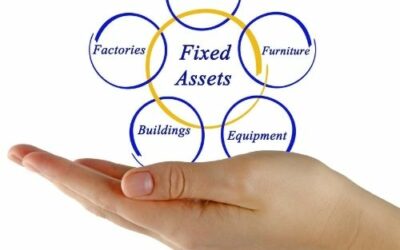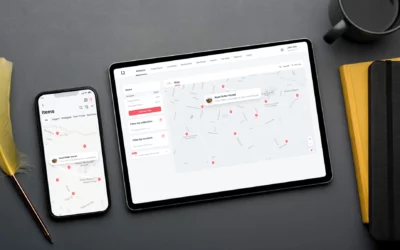Fixed asset tagging is a process that speeds up your asset audits, saves you time, and saves you money. It’s a simple operation of sticking physical tags, such as QR codes or barcodes, onto your assets to link them to editable digital profiles.
This revolutionary process allows you to monitor asset usage and movements from anywhere in the world. When your assets are updated on-site, you’ll be able to monitor these changes and control your assets from hundreds of miles away.
What Are Fixed Asset Tags?
Fixed asset tags are physical tags that you can stick onto your physical assets. So, for example, you’ll be able to stick a QR code onto your laptop if you’re tracking IT assets.
This laptop will then have an online profile on your fixed asset tracking software and you’ll be able to link the physical laptop with this profile by using the tag.
So, after this, every time you scan the tag in your asset tracking app, the corresponding laptop’s profile will open, ready for you to edit any information or make use of helpful features.
In practice, what this means is that if you’re running an audit and notice an asset has an issue, reporting this issue is possible against the asset itself simply by scanning the tag and pressing “report issue”.
How Can You Use Fixed Asset Tracking?
Fixed asset tracking is used to log assets, reduce losses, and keep an up to date fixed asset register for tax, insurance, and expense purposes. Therefore, the core of your fixed asset tracking operations will be just this, logging your assets to ensure that they exist, are accounted for and are tracked.
Fixed asset tags then expand on this, as it opens up the possibility for more granular asset edits and information tracking. As you’ll be able to interact with assets while they’re physically in front of you, you can ensure you have more accountability.
Any edits you make on an asset’s profile using your asset tracking app are also reflected across the board, meaning that if you add an issue while you’re onsite, this is also visible on your web-based fixed asset register, ready for monitoring and exporting.
This gives you the most accountability possible and reduces the risks of ghost and zombie assets in one fell swoop.
RFID Fixed Asset Management
You can also opt for using RFID fixed asset tags. These tags give you more control and automation over your asset tracking.
We recommend pairing passive RFID tags with handheld readers to start. This way, you can unlock a variety of time-saving features. The way these tags work is by receiving radio frequency signals from your handheld reader to indicate their presence.
In essence, therefore, they’re similar to QR codes and barcodes only don’t need a line of sight to be scanned, can be scanned in bulk, and can be scanned from a distance.
Therefore, if you’re tracking high-value assets, you can conceal tags. You can also run faster audits as it’s a simple case of pulling the trigger on your handheld reader and verifying the tags’ locations.
RFID tags are also very helpful when it comes to small tools tracking as you’ll don’t need to physically find the tags on assets to scan them and account for them.
itemit’s Asset Tracking Software
itemit’s asset tracking software gives you a wide range of features to play around with. From equipment checkout functionality to asset maintenance features, you’ll be able to monitor your asset usage with ease.
itemit is a cloud-based asset tracking system, which means any changes you make onsite are also reflected on your entire asset register in real-time.
The software is unique as it allows you to combine barcodes, GPS trackers, QR codes and RFID tags under one banner, giving you the full range of functionality possible.
To find out more about how itemit’s fixed asset tracking software can help your business save time and money, you can contact the team at team@itemit.com. You can also fill in the form below to start your 14-day free trial.
Fixed Asset Tags
Choose a better way to track your assets
Start your free 14-day trial now
Instant access. No credit card details required.
You can also start your 14-day free trial by filling out the form below, or you can contact us at team@itemit.com or at 01223 421611.
Or, you can check out these blogs:
What Are the Best Asset Management Tracking Tools?
3 Ways Fixed Asset Tracking Software Saves you Time and Money
How to Track Maintenance with Heavy Equipment Maintenance Software
Latest posts
itemit Blog
Tips, guides, industry best practices, and news.
Latest posts
itemit Blog
Tips, guides, industry best practices, and news.
Related articles
How Asset Tracking Can Help Track Your Antiques and Collectables
Discover how antique inventory management with asset tracking technology helps safeguard high-value assets like antiques and collectables, ensuring secure and efficient organisation.
How to Get The Most Out of Your Fixed Asset Register
A properly automated and maintained fixed asset register can ensure you get the most from your assets and avoid tax admin headaches. Find out how in this article!
What is an Asset Register and Why Should You Use One?
Tracking your fixed assets has plenty of benefits. But if you want to make the most out of it, you must do it right. Read this post to learn how.



